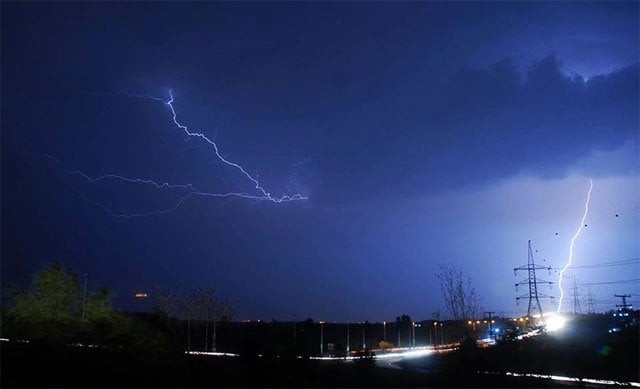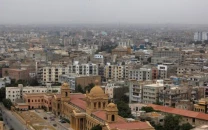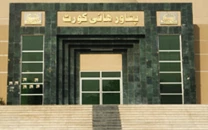Pakistan bore full brunt of El Niño
Being unprepared to face climate change, country paid a heavy price

Prime Minister Nawaz Sharif on Friday directed the Pakistan Meteorological Department (PMD) to submit an explanation regarding its failure to predict the thunderstorms that struck Punjab, Khyber-Pakhtunkhwa. PHOTO: Online
Despite knowing the country’s vulnerability to climate change, the federal government has not yet released Rs19 billion to the Pakistan Meteorological Department (PMD). The amount was promised to the Met Department in June of 2016 for procuring modern weather radars to upgrade the domestic weather forecast system.
El Nino and wheat crop 2016-2017
Meanwhile, the National Flood Protection Plan was also not approved because of the paucity of funds.
2016 Weather review
Pakistan reeled under the full impact of El Niño, experiencing some unusual extreme weather events which claimed as many as 500 lives. The severe El Niño of 2015-16 also resulted in marking 2016 as the hottest year on record across the world.
“Although El Niño … ended in April of 2016, but Pakistan suffered its effects throughout the year,” said chief of Met office, Dr Ghulam Rasul.
He said under its impact, snowfall occurred as late as February and March in 2016.
Between March 9 and 29, heavy rains claimed 141 lives and damaged 1,058 houses across the country, according to the National Disaster Management Authority (NDMA).
In April and May, temperatures started rising and in May and June snow started melting in the northern regions because of which the water flow in Tarbela and Mangla dams was recorded 17-20 percent above normal, he said.
The country experienced heavy rains in April too which claimed 127 lives and damaged 1,948 houses between April 2 and 25.
Highest number of deaths were reported from Khyber-Pakhtunkhwa where 97 people were killed, followed by Gilgit-Baltistan with 18 deaths and Azad Kashmir where 11 people had died. On June 1, major cities across the country were hit by strong windstorms in which 15 lives were lost in Islamabad Rawalpindi as well as in parts of Khyber-Pakhtunkhwa.
El Niño may aggravate drought situation in Pakistan
In the same month, Pakistan experienced an intense heatwave which lasted till the start of the monsoon season.
“During the summer of 2016, temperatures in rural Sindh continuously remained above 50° Celcius for 23 days while in Jacobabad, the mercury level touched 54°C in 2016,” said Dr Rasul.
The monsoon season in the country was also suppressed by the impact of El-Nino.
“The monsoon season was shortened by 30 days and lasted just 63 days instead of 90 days which is its normal duration,” he said.
In July, extreme flood events were reported from northern areas, especially from Chitral.
On July 2, 29 deaths occurred after a flash flood hit Ursoon Valley in District Chitral.
Also in July, rainfall across the country was 13 percent below average and the same pattern was observed in August as well. The month of September was almost dry.
However, the Met office claimed that Pakistan received 25 percent above average rain since the onset of the monsoon season.
In early September, heavy monsoon floods triggered by rains swamped vast areas in Punjab and Azad Kashmir, killing at least 139 people. “Insufficient rainfall in the last month of monsoon followed by a dry spell, which lasted till December, has caused a drought-like situation in the country,” said Dr Rasul.
Due to the dry spell, Pakistan also experience another extreme weather event known as smog which persisted over Lahore for a few days before dissipating, creating a negative impact on public health, he said.
Fog, which usually starts in December, also occured in November, he said.
According to the Motorway Police, between January and November 2016, at least 15 major road accidents were reported on the Motorway and GT Road between Peshawar and Rahim Yar Khan due to fog. At least 19 lives were lost in these accidents.
Published in The Express Tribune, January 2nd, 2017.


















COMMENTS
Comments are moderated and generally will be posted if they are on-topic and not abusive.
For more information, please see our Comments FAQ